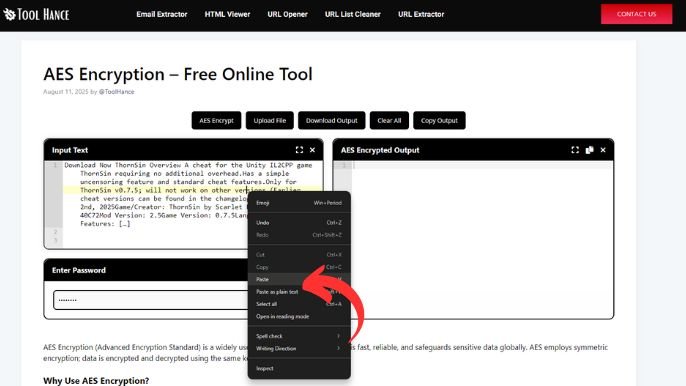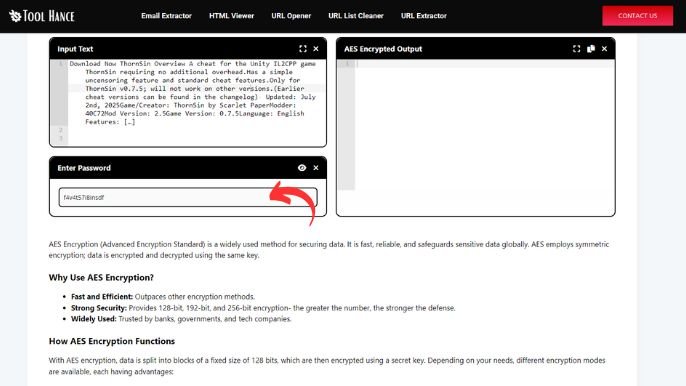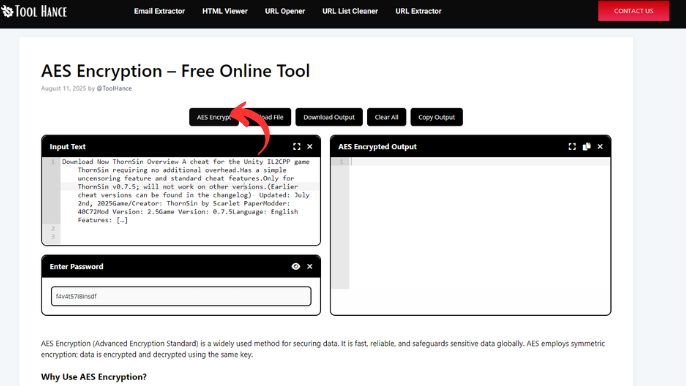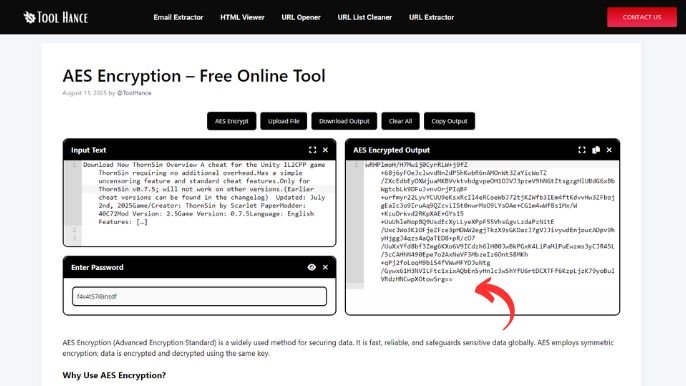Input Text
Enter Password
AES Encrypted Output
AES Encryption (Advanced Encryption Standard) is a widely used method for securing data. It is fast, reliable, and safeguards sensitive data globally. AES employs symmetric encryption; data is encrypted and decrypted using the same key.
Why Use AES Encryption?
- Fast and Efficient: Outpaces other encryption methods.
- Strong Security: Provides 128-bit, 192-bit, and 256-bit encryption- the greater the number, the stronger the defense.
- Widely Used: Trusted by banks, governments, and tech companies.
How AES Encryption Functions
With AES encryption, data is split into blocks of a fixed size of 128 bits, which are then encrypted using a secret key. Depending on your needs, different encryption modes are available, each having advantages:
Supported AES Encryption Modes
- ECB (Electronic Codebook)
- Simplest mode (IV is not required).
- Not the strongest security — duplicate data blocks will produce duplicate encrypted blocks.
CBC (Cipher Block Chaining)
- More secure than ECB.
- Uses an IV to ensure uniqueness for each encryption.
- Generally the preferred choice.
CTR (Counter Mode)
- Converts block encryption to a stream cipher.
- Enables faster and parallel processing.
GCM (Galois/Counter Mode)
- This option is the most secure.
- Offers additional security due to built in authentication.
- Used in high security needs.
How Can I Use AES Encryption Online?
Open the Tool
- Go To Toolhance.com

Enter Your Data
- Type or paste the text you want to encrypt in the provided box.

Set a Secret Key
- Choose a password/key. Only the person with this key can decrypt your message.

Click Encrypt
- Press the Encrypt button, and the tool will instantly generate your encrypted text.

Copy & Share Securely
- Copy the encrypted result and share it safely with others.

Designed by: Tool Hance | Visit our rankings of the Best SEO Companies.
